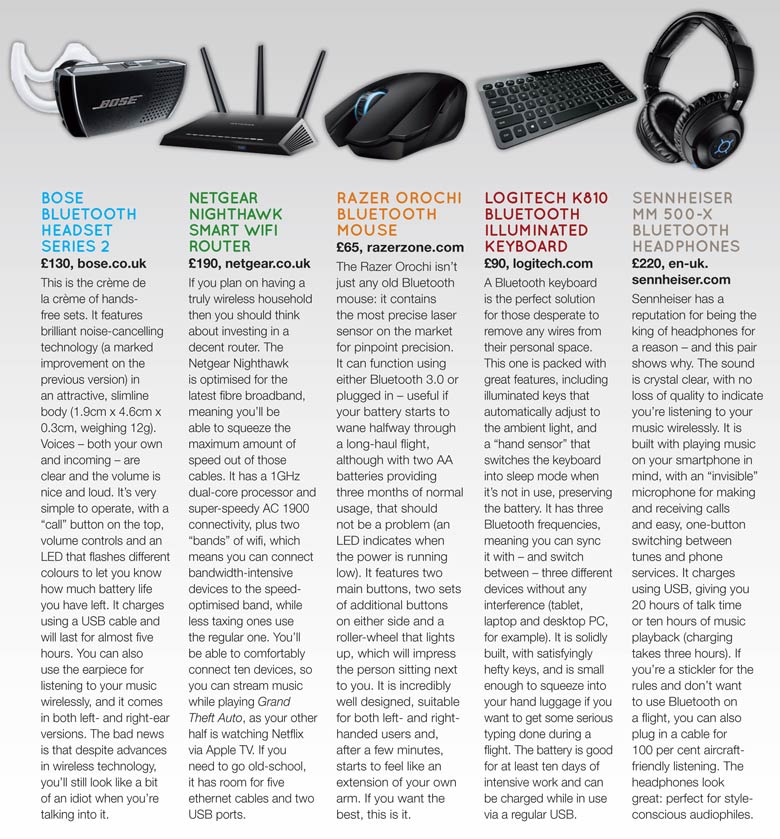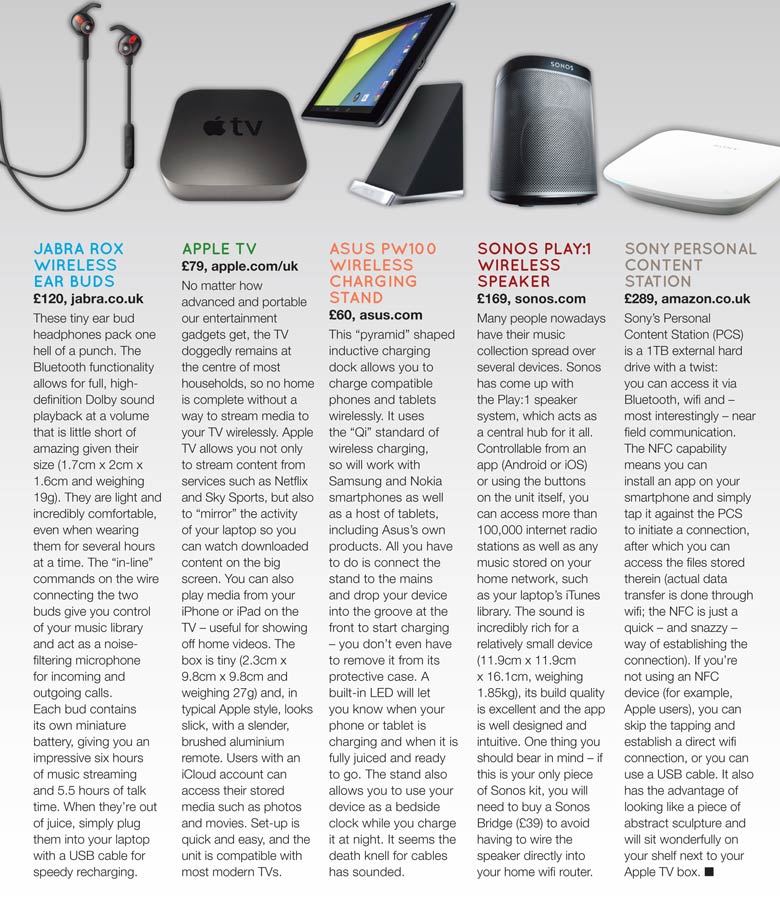Bluetooth, wifi, NFC and inductive charging all spell the end of plugs and cables. Steve Dinneen picks out essential wire-free gadgets
Do you suffer from isopreneenamelfilamentphobia? If the sight of wires snaking across your desk brings you out in a cold sweat, then the answer might be yes.
Isopreneenamelfilamentphobia is the fear of cables and, if you are indeed in its grip, I have some good news: we’re rapidly marching towards a brave new world where wires – the bane of the 20th century – will be obsolete.
Devices that once relied on passing a current through metal cables are now increasingly leeching power and information silently and invisibly from thin air. Arthur C Clarke’s third law stated that any technology sufficiently advanced is indistinguishable from magic, and never were his words more appropriate. How many among us know how a wifi connection actually works, or Bluetooth headphones, or the new wave of cable-less charging devices?
Here’s a brief explanation: Bluetooth – invented by Ericsson in 1994 and named after Harald Bluetooth, a Danish king from the 900s with a proclivity for blueberries – uses radio waves to exchange data with up to seven other devices in close proximity (up to ten metres). Anything with a Bluetooth chip – often mobile devices such as phones – transmits a signal over a special radio frequency, seeking a “pair” nearby. This differs from infrared (like your TV remote), which uses light waves and, therefore, needs a line of sight to communicate. The short distance makes Bluetooth perfect for pairing two or more mobile devices, such as hands-free sets and headphones, and it is also widely used in wireless keyboards and mice.
Wifi works in a similar way but generally allows you to connect to the internet instead of another device. Wifi is better for this purpose because its signal is stronger, faster and – if correctly configured – more secure.
NFC (near field communication) technology – which is present in many newer smartphones and can be used for anything from paying for groceries to telling when they’re about to expire in the fridge – works along the same lines, but is simpler than wifi or Bluetooth, transmitting a very narrow set of data over a very small distance (about 20cm). The short distance and high security makes NFC perfect for contactless payments, where you tap your device or card, equipped with a special microchip, to transfer small amounts (usually capped at £20, depending on your bank) in participating stores.
Wireless charging (also known as “inductive charging”), however, works completely differently. It uses magnets to beam energy between two devices. A charging station or dock, when plugged into a mains connection, creates an electromagnetic field, which generates a current in anything nearby that has a corresponding magnetic coil. Samsung and Nokia are both champions of the technology (with Apple tipped to follow suit with the upcoming iPhone 6), while electric toothbrushes have been using it for ages.
Inductive charging is one of the hottest topics in tech right now, with electric car makers signalling it is likely to play a large part in the future of the industry. BMW and Daimler are already jointly developing a standardised form of large-scale inductive charging, which would allow vehicles to juice-up by simply parking in designated spots.
The wireless revolution is already under way; here are some of the gadgets blazing the trail...












